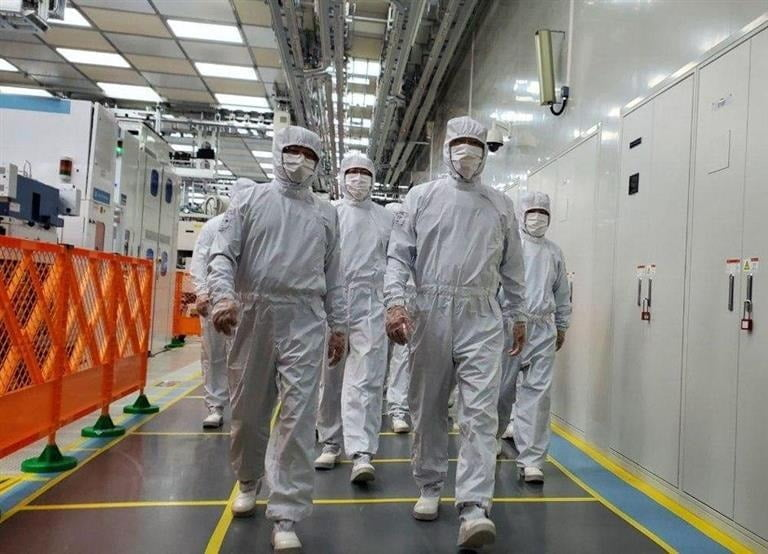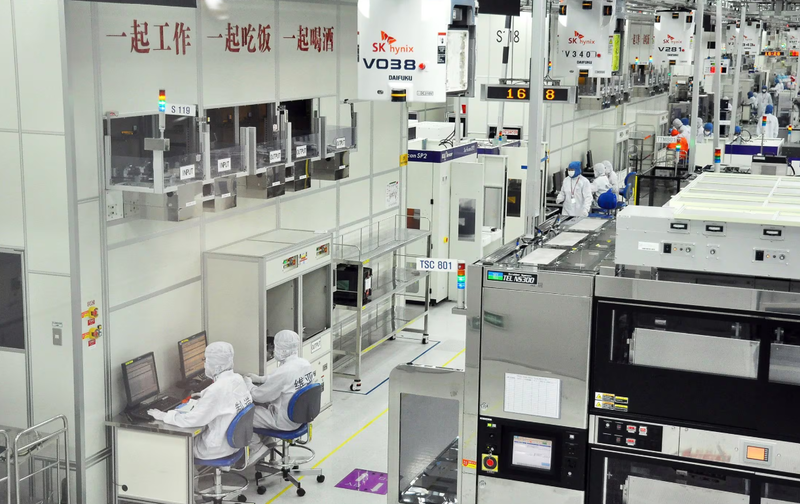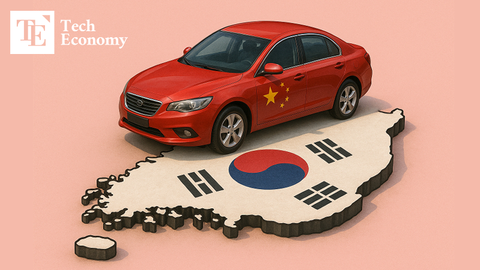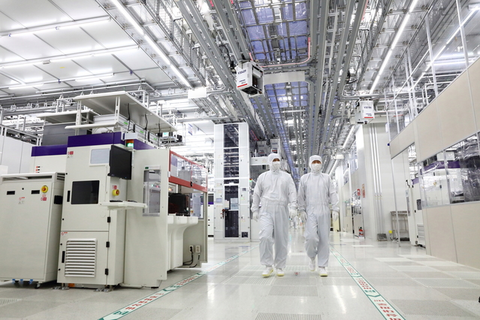Samsung and SK on Alert as U.S. Tightens Semiconductor Equipment Restrictions on China — Some Say Impact May Be Limited
Input
Modified
U.S. Notifies Plan to Tighten Semiconductor Regulations Industry on Alert Over Possible Abolition of ‘VEU’ Program Experts Predict Limited Impact on Korean Firms

South Korea’s semiconductor powerhouses, Samsung Electronics and SK Hynix, are bracing for possible disruption as the Trump administration signals the rollback of a critical export exemption that has underpinned their operations in China. At the heart of this development is the potential termination of the Verified End-User (VEU) designation. This special U.S. trade mechanism has allowed designated foreign companies to import American semiconductor equipment into China without undergoing lengthy case-by-case licensing procedures.
If the VEU policy is rescinded, it could complicate the operations of Korean chipmakers in China, disrupt upgrade cycles for advanced manufacturing equipment, and introduce greater uncertainty into global semiconductor supply chains. Yet, despite the rising tension, many industry experts believe that South Korea’s chipmakers have long seen this moment coming—and that their proactive realignment strategies may cushion the blow.
Trump’s Policy Reversal: Washington Reaches Out to Samsung, SK, and TSMC
According to reports from the semiconductor industry on June 23, Jeffrey Kessler, U.S. Assistant Secretary of Commerce for Industry and Security, formally notified Samsung Electronics, SK Hynix, and Taiwan’s TSMC that the U.S. government may soon impose new restrictions on the export of U.S.-origin semiconductor equipment to their facilities in China. In practice, this amounts to the withdrawal of the VEU designation, a move that would force these companies to navigate standard, more time-consuming licensing protocols.
The VEU program has played a vital role in helping allied companies operate efficiently in China. It granted broad, pre-approved permission to import sensitive equipment without additional scrutiny. Samsung and SK Hynix, two of South Korea’s flagship technology firms, have leveraged this status to maintain and expand their high-tech fabrication facilities in China, including NAND flash and DRAM production.
Samsung operates NAND flash plants in Xi’an and backend processing facilities in Suzhou, while SK Hynix runs DRAM manufacturing in Wuxi, packaging in Chongqing, and a NAND fab in Dalian. These facilities are particularly dependent on advanced U.S. equipment. Notably, the Wuxi plant is responsible for roughly 40–50% of global DRAM production, underlining the high stakes involved.
The policy shift comes amid a broader U.S. strategy to curb China’s rise in advanced manufacturing. This is not a new trend. In October 2022, the Biden administration imposed sweeping restrictions on the export of advanced semiconductor tools and related technologies to China, while granting a one-year waiver to Samsung and SK Hynix. In 2023, the companies were given indefinite VEU status, a move seen as a diplomatic acknowledgment of their strategic importance within the U.S.-Korea tech alliance.
However, if the Trump administration abolishes the VEU mechanism entirely, it would mark a new phase in the tech decoupling process—one that injects procedural delays and operational risks into the previously stable flow of equipment and technology. It would also affect U.S. equipment makers such as Applied Materials, Lam Research, and KLA, whose tools would face heightened restrictions, even when destined for non-Chinese firms with factories in China.
This tightening of policy also aligns with the recent high-level U.S.-China trade talks in London and Geneva, and with shifting rhetoric from U.S. officials. At the Asia Security Dialogue, U.S. Defense Secretary Pete Hegseth called for a reassessment of the long-standing approach of "安美經中"—a doctrine that prioritized security with the U.S. and economic engagement with China. Hegseth emphasized the need for a unified approach where economic decisions reflect national security imperatives.
Korean Firms Adjust Course: China Exposure Tapers as Production Rebalances
Despite the policy turbulence, many Korean industry insiders are cautiously optimistic. The dominant narrative in the sector suggests that while the U.S. restrictions could create short-term inconvenience, the long-term damage may be limited. That’s largely because Korean chipmakers, aware of the shifting geopolitical currents, have been actively preparing for this scenario under the broader U.S. “de-risking” policy.
This policy, which emerged under Biden and is now being continued or expanded under Trump, seeks to eliminate strategic dependencies on China, particularly in sensitive technology areas. With the writing on the wall, companies like SK Hynix and Samsung have had time to rethink their global production strategies.
According to Omdia, a global market research firm, SK Hynix plans to increase production in its domestic facilities, especially at its M14 and M16 fabs in Icheon, South Korea. While the company had originally intended to increase quarterly DRAM wafer output at its Wuxi plant from 480,000 to 520,000 wafers, rising demand is now expected to be addressed via domestic capacity expansion. This strategic pivot is likely to lower Wuxi’s share of SK Hynix’s total DRAM output, currently at around 40%.
Samsung Electronics has made similar adjustments. It has significantly scaled down planned production at its Xi’an NAND flash plant, which was previously expected to reach 600,000 wafers per quarter. In parallel, Samsung Display announced a USD 1.75 billion investment in a new OLED factory in Vietnam, and speculation is growing that Samsung’s semiconductor division (DS) may soon follow suit.
Supporting this regional shift, Samsung’s suppliers are also investing abroad. Notably, Korean packaging firm Signetics is investing USD 100 million to build a plant in Ba Thien Industrial Complex, located in Vinh Phuc Province, Vietnam. This signifies a growing industry consensus that future growth lies outside of China.

Cautious Optimism: Risks Remain, but the Industry Is Not Unprepared
Despite this proactive repositioning, analysts warn that the potential abolition of the VEU regime could still create friction, especially in the form of procedural delays and bureaucratic slowdowns. Kim Yang-paeng, a senior researcher at the Korea Institute for Industrial Economics & Trade, noted that while firms have had time to adjust their production and investment strategies, a shift to case-by-case export licensing could introduce new inefficiencies.
“Because companies already underwent waiver periods, they likely adjusted their investment and advanced production strategies in China accordingly,” Kim said. “So this latest move may not cause a major shock immediately.” However, he cautioned that “if the system shifts to a permit-based model, administrative delays could disrupt operations.”
Kim also hinted at a broader strategic motive behind Washington’s actions, suggesting the possibility that this policy shift may be a prelude to more formal trade sanctions, such as tariffs. “It may be more about testing responses ahead of official moves,” he said, stressing the importance of watching how the situation unfolds in the coming months.
As the global semiconductor landscape continues to evolve in response to intensifying U.S.-China tech rivalry, South Korean firms find themselves at a pivotal crossroads—caught between maintaining access to the Chinese market and aligning with the United States’ tightening grip on critical technology flows. While the road ahead is uncertain, what’s clear is that Korean chipmakers are not standing still.





















